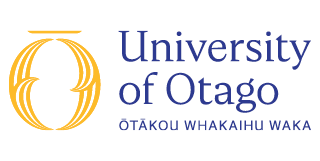Overview
The structural and functional organisation of the nervous system at cellular, tissue, system and integrative levels.
Studies undertaken during ANAT 242 will provide a sound foundation for 300-level Neuroscience studies in this and other Departments.
ANAT 242 will be delivered as modules directed at distinct levels: anatomical structure, cellular organization, molecular events, systems organization and ethics, supported by laboratory teaching. The first will provide a reasonably detailed and systematic overview of the anatomical organization of the brain, peripheral nervous system and their related structures.
The second module is focused on the cellular organization of the nervous system, and will consider the specialized structure of a variety of cells that constitute the nervous system. The molecular neuroscience module will look within neurons to begin to describe the molecular events that underlie the working of the brain. The final module concerning systems neuroscience will introduce networks as they relate to reward and behavioural regulation, along with the methods used to discover such information.
Throughout the paper you will apply knowledge to biomedical and clinical examples, while considering the social and ethical ramifications of our increased knowledge of the human nervous system and the implications for medical intervention and manipulation.
About this paper
| Paper title | Neurobiology |
|---|---|
| Subject | Anatomy |
| EFTS | 0.15 |
| Points | 18 points |
| Teaching period | Semester 2 (On campus) |
| Domestic Tuition Fees ( NZD ) | $1,173.30 |
| International Tuition Fees | Tuition Fees for international students are elsewhere on this website. |
- Prerequisite
- CELS 191 and CHEM 191 and (HUBS 191 or PTWY 131) and 36 further points
- Schedule C
- Science
- Notes
- For students with a major or minor in neuroscience, PHSI 191 may be substituted for CHEM 191 as a prerequisite.
- Contact
Anatomy Office
Room 231, 2nd Floor
Lindo Ferguson Building (LFB)
Tel 479 7362
anat242.admin@otago.ac.nz- More information link
- View more information on the structure of the Anatomy major
- Teaching staff
2024 teaching staff and module order to be confirmed. Please contact the Department for more information.
- Paper Structure
Module 1: Neuroanatomy
Module 2: Cellular Neuroscience
Module 3: Molecular Neurobiology
Module 4: Systems Neuroscience and Ethics- Teaching Arrangements
- All teaching is undertaken on campus.
- Textbooks
Optional:
Mark F Bear, Barry W Connors and Michael A Paradiso, 'Neuroscience: Exploring the Brain' (4th ed.; Wolters, Kluwer, 2016)Note: The 3rd edition of this textbook is also acceptable.
- Graduate Attributes Emphasised
- Global perspective, Interdisciplinary perspective, Lifelong learning, Scholarship, Communication, Critical thinking, Ethics, Information literacy, Research, Self-motivation, Teamwork.
View more information about Otago's graduate attributes. - Learning Outcomes
- Knowledge of, and the ability to identify, the major anatomical features of the central and peripheral nervous system
- A clear understanding of structural and functional relationships between these features
- A familiarity with the injured nervous system and some of the major diseases of the nervous system and the ability to relate their clinical presentation to the underlying anatomical and structural organisation
- A knowledge of the cellular organisation of the nervous system and how cellular interactions give rise to dynamic neuronal activity
- A well-developed understanding of the morphology and intracellular organisation of specific cell types in neuronal tissue
- An appreciation of the chemical composition and molecular organisation of neuronal tissue
- A detailed knowledge of the molecular events underlying the process of neurotransmission
- Able to demonstrate a familiarity with how our knowledge of the nervous system, and how parts of it function together as networks, has been gained
- Able to demonstrate an awareness of, and sensitivity to, the ethical context of neuroscience
- Able to demonstrate the close relationship between scientific advance and ethical considerations
